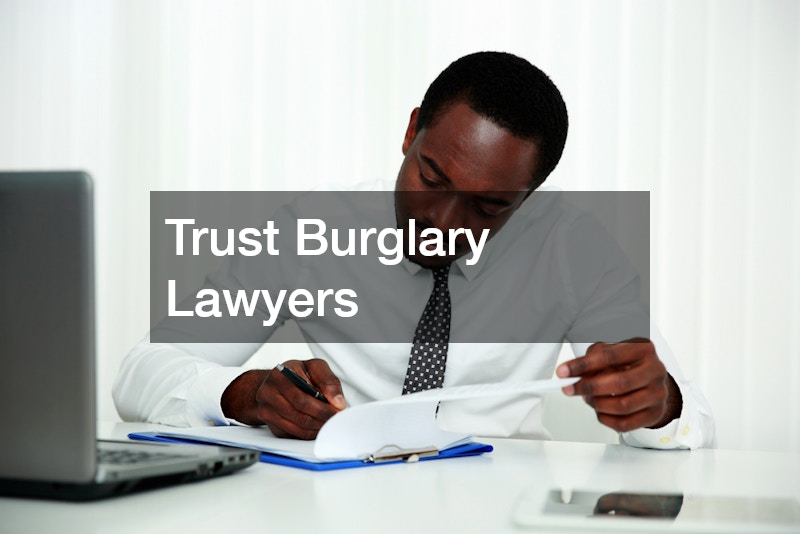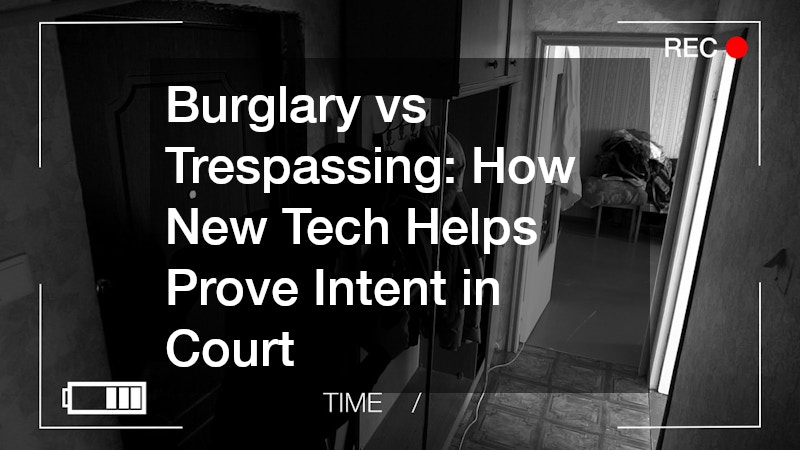The line between burglary vs trespassing might seem clear, but in many legal cases, it comes down to one critical factor: intent. Did someone unlawfully enter a property just to snoop around, or was there a deeper plan to steal or commit a crime? That distinction shapes the outcome in court and can affect everything from the severity of charges to the strength of the defence.
Today, technology plays a growing role in how courts determine intent. With advanced surveillance systems, motion detectors, digital locks and time-stamped access records, new tech tools offer vital clarity. They’re helping property owners and legal professionals present more compelling evidence when intent is in question.
This article explores how innovative technology helps define the difference between burglary and trespassing and what that means for individuals, law firms and security providers. We’ll look at the value of having a secure storage unit, why the right burglary lawyers can make all the difference and how working with a local law firm can give you an edge when navigating complex legal claims. In a world where property crime is evolving, legal strategy—and security—must evolve with it.
Secure Your Storage

Security has become more than just a lock and key. With theft and unauthorised access on the rise, property owners are turning to smarter solutions to protect their belongings. A secure facility is no longer a luxury—it’s a necessity. New security tools such as AI-powered cameras, biometric entry systems and smart alarms offer not only protection but also digital records that help prove what happened and when. These systems play a pivotal role in cases where it’s unclear whether a person had criminal intent, helping courts and juries interpret suspicious behaviour more accurately.
For example, a secure storage unit equipped with motion sensors and 24/7 video monitoring can offer clear, time-stamped footage showing whether someone simply wandered in or was actively searching for valuables. This evidence can make a major difference in court, especially in disputes involving burglary and trespassing. The technology doesn’t just deter crime—it records the details in real time, giving police and lawyers a clearer picture of the intruder’s motives. As more people rely on off-site storage for personal or business use, these systems are becoming crucial in ensuring justice is based on facts, not assumptions.
Trust Burglary Lawyers

Understanding the legal difference between burglary and trespassing is essential, but applying it to real cases is where skilled legal support becomes indispensable. Burglary requires proof of intent to commit a crime inside the premises, while trespassing generally involves unauthorised entry without criminal plans. Technology is transforming the way these legal definitions are applied, but interpreting that evidence still requires professional experience. The role of defence and prosecution lawyers is evolving alongside digital tools, with specialists using tech-based evidence to build or challenge a narrative around the accused’s intent.
Experienced burglary lawyers know how to interpret and present digital footage, access logs and forensic data to support a client’s case. They can identify patterns, highlight inconsistencies and even challenge the admissibility of certain tech-derived evidence. For example, if a person entered a building but didn’t steal anything or tamper with property, a lawyer might use footage to argue the act was trespassing rather than burglary. This distinction can reduce charges and penalties significantly. With burglary vs trespassing cases becoming increasingly reliant on tech, having legal experts who understand both the law and the latest tools is more critical than ever.
Choose a Local Firm

Choosing the right legal representation can have a major impact on the outcome of your case. A local law firm brings not just legal expertise but also familiarity with the regional court system, local law enforcement procedures and community-specific crime patterns. This local insight helps lawyers craft more effective defences or prosecutions, particularly in property crime cases. In matters where understanding a neighbourhood’s crime trends or a court’s typical approach to intent is essential, that local edge counts.
When dealing with charges that hinge on the line between burglary and trespassing, local firms are often better positioned to respond quickly and access site-specific evidence. They may have pre-existing relationships with area security providers or know which buildings commonly use high-tech surveillance. This can help secure video footage, access data and expert witnesses in a timely way. Whether you’re protecting your assets or defending your actions, working with a local team ensures you get contextual insight, not just legal advice. With property-related offences becoming more complex due to advancing technology, engaging a nearby legal partner can mean the difference between a fair hearing and a missed opportunity for justice.
Technology has added clarity to legal cases where intent is key, especially when distinguishing between burglary vs trespassing. From advanced surveillance in secure storage units to expert guidance from burglary lawyers and support from your local law firm, every tool and partnership counts. As criminal tactics grow more sophisticated, so must our legal responses. By understanding how tech helps prove intent in court, Australians can better protect their property, their rights and their peace of mind.
